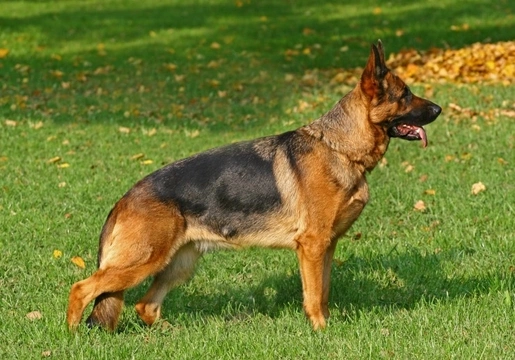Pets
Pets for studWanted petsBreedersAccessories & services
Knowledge hub
Support
Support & safety portal
Chronic Degenerative Radiculomyelopathy (CDRM) in dogs
Chronic degenerative radiculomyelopathy is also sometimes known as degenerative myelopathy and is a hereditary health condition in dogs that affects the spinal cord.
It is caused by a mutation of the SOD1 gene that has been identified as present to some extent in the gene pool of over forty different dog breeds to date, and those breeds that have the highest risk for the condition have a testing scheme in place to allow breeders to find out their own dogs’ statuses prior to breeding.
The condition leads to a progressive loss of coordination and weakness in the hind legs caused by spinal cord disease, which over time, causes total paralysis that cannot be stopped or reversed.
Whilst the precise action of the condition has not been definitively identified, it is thought that the insulating sheath around the spinal cord’s neurons, called the myelin sheath, is attacked by the dog’s own immune system over time, causing it to break down and hamper the communication between the sensory nerves in the lower spine and the dog’s brain.
The Kennel Club, in association with the British Veterinary Association, oversees a testing scheme for the condition in breeds considered to be at greatest risk of chronic degenerative radiculomyelopathy, which enables would-be breeders of potentially at risk breeds to find out their dog’s status prior to finding a mating match and making a final decision.
In this article, we will look at chronic degenerative radiculomyelopathy in dogs in more detail, including what sort of dogs can be affected by the condition, how the heredity of the condition works, and how to get your dog tested. Read on to learn more.
More about chronic degenerative radiculomyelopathy
Chronic degenerative radiculomyelopathy leads to a progressive and irreversible paralysis of the dog’s hind legs, which is of course apt to have a significant impact on the dog’s quality of life but is not actually painful. The condition is progressive and once it has begun to take hold, cannot be reversed or cured, and ultimately proves fatal, with affected dogs often being put to sleep once the condition begins to have a significant impact upon their quality of life in order to avoid prolonging their suffering.
The condition occurs due to a genetic mutation in the gene coding for a type of protein that works to destroy free radicals in the body, called superoxide dismutase. Free radicals are an important part of the body’s natural immune system and protection against disease, but when they malfunction or are produced in excessive quantities, they can lead to a range of degenerative conditions such as chronic degenerative radiculomyelopathy, as the free radicals ultimately interfere with the normal, healthy state of the cells in different parts of the body.
What sort of dogs can be affected by the condition?
Chronic degenerative radiculomyelopathy has been identified in over forty dog breeds at different rates of occurrence, but the breeds that are considered to be at greatest risk of inheriting the condition include the German shepherd, Pembroke Welsh corgi and the Boxer.
Cross breed dogs that contain partial ancestry from one of the potentially affected breeds may potentially inherit one gene mutation for the condition from the possibly affected breed side of their ancestry, but one mutated gene alone is not enough to cause a problem-the status of any given dog comes down to the combination of genes that they receive from both sides of their parentage.
However, because chronic degenerative radiculomyelopathy can be found to some extent in a wide number of dog breeds, there is still a small risk that should not be overlooked.
How does the heredity of the condition work?
Chronic degenerative radiculomyelopathy is an autosomal recessive hereditary health condition, which means that whether or not any given puppy will be affected by it depends on the combination of genes that they inherit from both sides of their breed line. Dogs are assigned to one of three statuses for the condition-clear, carrier or affected, and the match between the status of the two parent dogs determines the result in the puppies.
- Two clear dogs will have clear puppies.
- Two affected dogs will have affected puppies.
- Two carriers will have a mixed litter of 50% carriers, 25% affected and 25% clear.
- A clear dog and an affected dog will produce a litter of carriers.
- A carrier and a clear dog will produce 50% carriers and 50% clear.
- A carrier and an affected dog will produce 50% carriers and 50% affected.
How to get your dog tested
If you own a dog from a breed that is considered to be at risk for the condition, it is important to have them tested for their status prior to making a decision to breed, in order to make an informed decision about breeding and finding the right match.
To get your dog tested, send off a DNA sample from your vet to one of The Kennel Club’s approved laboratories, who will then return the result of your dog’s status to you.



